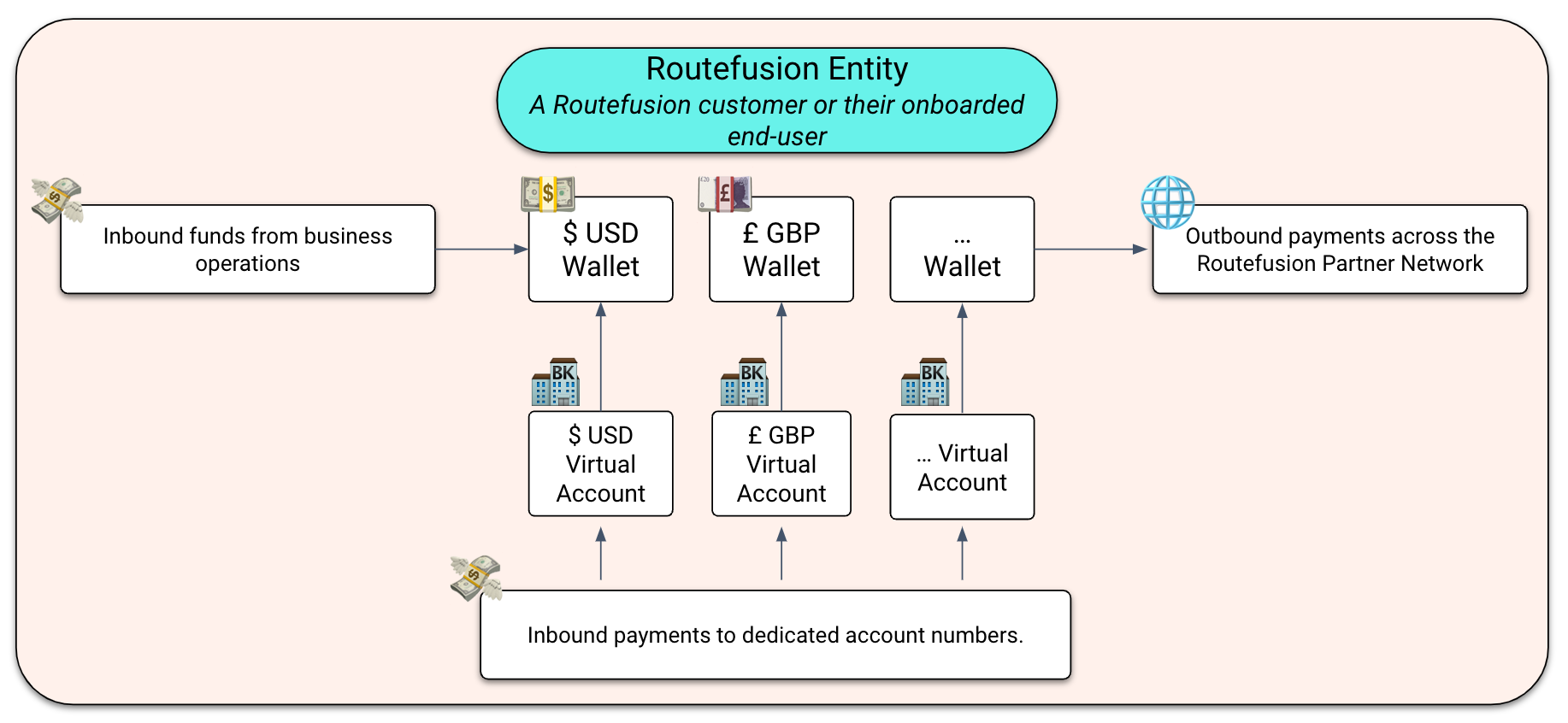Using virtual accounts and wallets in the Routefusion ecosystem

Hey y’all!
Recently we’ve been working with a lot of customers on virtual accounts and virtual wallet rollouts, and we wanted to write about some of the common use cases we’re seeing, and how these tools work in the Routefusion platform.
What are virtual accounts?
In Routefusion’s infrastructure, a virtual account is a set of banking credentials that sits underneath a wallet and lets you receive funds.

Virtual accounts are a bank account credential (like an account number in the US or an IBAN in Europe) that can be created for a specific purpose, and connected to another primary account or wallet. The virtual account numbers let you send and receive funds just like a normal account. For example, you could have one overall bank account and then create hundreds or thousands of virtual account numbers for receiving customer funds, monitoring vendor payments, and more.
With virtual accounts, the funds are held in the primary account or wallet, and the virtual account credentials are used as references. Think of it as a real-time forwarding address: you can send money to the virtual account number and it’s tracked and confirmed there and then sent on to the main account.
What are virtual accounts used for?
Our users have a few main use cases for virtual accounts.
Reconciliation and Payment Tracking
Traditional invoicing tools have relied on a mix of manual systems and pass-through reference numbers to power reconciliation. From relying on customers to include the right reference numbers to burdening accounting teams with manually verifying which payments have arrived, the whole process is highly prone to error. And it’s no fun for customers either: if you’ve ever bought a house in the US, you might know that terrifying feeling of wiring your life savings to the bank with just a reference number, and hoping for the best.
Virtual accounts let you simplify receivables and reconciliation by creating purpose-level accounts to receive and track funds. You could make an account for a given customer, a department, a project, or even an invoice, and always know when the associated payments had arrived and attribute cash flow back to its origin.
We’ve had customers work with Routefusion to set up new invoicing systems and streamline their treasury processes, saving hundreds of hours of manual work each quarter.
Embedded Financial Services
For Neobanks, BaaS platforms, and other companies building financial services into their platforms, accounts are a key feature. Customers use Routefusion to provide account infrastructure to hold funds and send and receive payments as part of their apps.
We’ve also written about how our customers are combining virtual accounts with cross-border rails to build their own real-time payment networks. Adding virtual accounts to receive pay-ins in local currencies lets you complete the network.
How does Routefusion help with virtual accounts?
In addition to offering payout wallets in 180 currencies around the world, we can help you create virtual accounts to manage inbound payments in USD, MXN, BRL, COP, EUR, GBP currencies.
If you're interested in setting up a virtual accounts implementation, get in touch!
